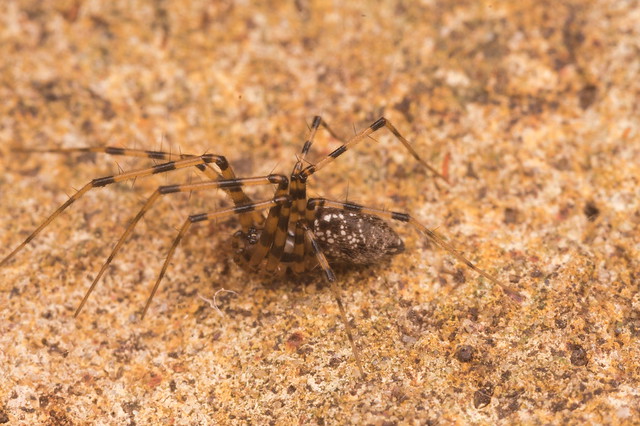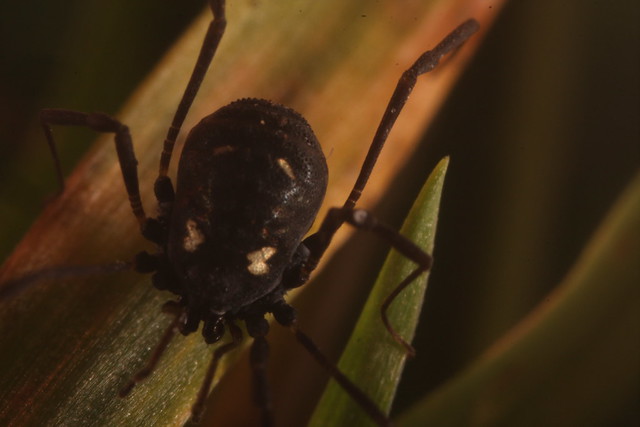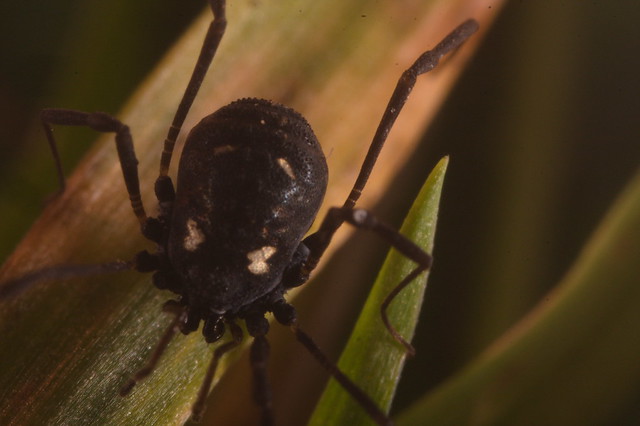A female Histricostoma argenteolunulatum, in the UK only found in one place and this year. The real size is 2.2 mm, magnification is 3.36
 IMG_5400Harvestman by davholla2002, on Flickr
IMG_5400Harvestman by davholla2002, on Flickr
Pseudoscorpion possibly Roncus lubricus magnification 1.96 body 2mm long, claws about 1.53
 PseudoscorpionIMG_5005-1 by davholla2002, on Flickr
PseudoscorpionIMG_5005-1 by davholla2002, on Flickr
Red spider mite, the real size is 2.41 mm, magnification is 3.36
 IMG_4925SpiderMite by davholla2002, on Flickr
IMG_4925SpiderMite by davholla2002, on Flickr
Ichumenon Wasp eating honey. The real size is 7.03 mm, magnification is 1.4.
My wife asked me to make Yorkshire pudding, but I photographed this instead and we didn't have them. I think it was worth the sacrifice
 IMG_5094IchumenonWaspv2 by davholla2002, on Flickr
IMG_5094IchumenonWaspv2 by davholla2002, on Flickr
Spider, the real body size is 4.05 mm, magnification is 1.4
 SpiderIMG_5001 by davholla2002, on Flickr
SpiderIMG_5001 by davholla2002, on Flickr
 IMG_5400Harvestman by davholla2002, on Flickr
IMG_5400Harvestman by davholla2002, on FlickrPseudoscorpion possibly Roncus lubricus magnification 1.96 body 2mm long, claws about 1.53
 PseudoscorpionIMG_5005-1 by davholla2002, on Flickr
PseudoscorpionIMG_5005-1 by davholla2002, on FlickrRed spider mite, the real size is 2.41 mm, magnification is 3.36
 IMG_4925SpiderMite by davholla2002, on Flickr
IMG_4925SpiderMite by davholla2002, on FlickrIchumenon Wasp eating honey. The real size is 7.03 mm, magnification is 1.4.
My wife asked me to make Yorkshire pudding, but I photographed this instead and we didn't have them. I think it was worth the sacrifice
 IMG_5094IchumenonWaspv2 by davholla2002, on Flickr
IMG_5094IchumenonWaspv2 by davholla2002, on FlickrSpider, the real body size is 4.05 mm, magnification is 1.4
 SpiderIMG_5001 by davholla2002, on Flickr
SpiderIMG_5001 by davholla2002, on Flickr

 IMG_5400
IMG_5400 IMG_5400Harvestmanv2
IMG_5400Harvestmanv2